Common wild fig, Strangler fig
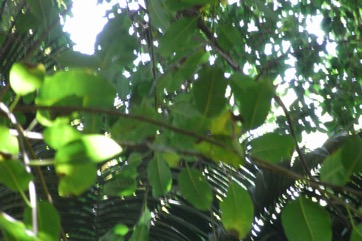
A tropical plant. It grows in wet and dry upland forest. It also grows in open grassland, woodland and swamp forest and along rivers. It can be on the edges of mangroves. It grows in the Sahel. It grows in areas with a 700-1800 mm rainfall. It grows in savannah forest often on stony hills in West Africa. It grows between 1,000-2,500 m altitude. It is drought tolerant. It can grow in arid places. It suits hardiness zones 7-9.
Also known as:
Belene, Bongo, Bupok, Cediya, Chaqerta, Chibeha, Dambi, Di kikilik, Doobaali, Dubalae, Dubale, Ebule, Gerina, Gewone wildevy, Gulgosi, Ibule, I-mara, Kachele, Kanyanguni, Ka pva, Kwonkwia, Lauro, Lodo, Looro, Loro, Mbelen, Mkuu, Moumo, Mugumo, Ndibale, Ndan, Ndubali, Nsanda, Ol-endeti, Ordenai, Oretiti, Pwoo, Shawri-wabi, Tinaita, Uncuine, Wuurdonaa, Yasin
Synonyms
- Ficus bequaertii De Wild.
- Ficus bongoensis Warb.
- Ficus burkei (Miq.) Miq.
- Ficus butaguensis De Wild.
- Ficus chlamydodora Warb.
- Ficus crassipedicellata De Wild.
- Ficus cyphocarpa Midlbr.
- Ficus dekdekena (Miq.) A. Rich.
- Ficus dekdekena var. angustifolia Peter
- Ficus dinteri Warb.
- Ficus erici-rosenii R. E. Fries
- Ficus eriocarpa Warb.
- Ficus galpinii Warb.
- Ficus goetzei Warb.
- Ficus iteophylla Miq.
- Ficus kagerensis Lebrun & Toussant
- Ficus mabifolia Warb.
- Ficus mammigera R. E. Fries
- Ficus medullaris Warb.
- Ficus microcarpa Vahl
- Ficus neurocarpa Lebrun & Toussaint
- Ficus persicifolia Warb.
- Ficus petersii Warb.
- Ficus philipsii Burtt Davy & Hutch.
- Ficus psilopoga Ficalho
- Ficus pubicosta Warb.
- Ficus rhodesiaca Mildbr. & Burret
- Ficus ruficeps Warb.
- Ficus rupicola Lebrun & Toussaint
- Ficus sassandrensis A. Chev.
- Ficus schinziana Warb.
- Ficus spragueana A. Chev.
- Ficus thonningii var. heterophylla Peter
- Ficus trophyton Lebrun & Toussaint
- Urostigma burkei Miq.
- Urostigma dekdekena Miq.
- Urostigma thonningii (Blume) Miq.
- NB The ones marked in red are probably now restored to species in their own right.
Edible Portion
- Fruit, Leaves, Gum
Where does Common wild fig grow?
Found in: Africa, Angola, Australia, Benin, Botswana, Burkina Faso, Cameroon, Cape Verde, Central Africa, Central African Republic, CAR, Congo DR, Congo R, Djibouti, East Africa, Eritrea, Eswatini, Ethiopia, Ghana, Guinea, Guinée, Guinea-Bissau, Kenya, Madagascar, Malawi, Mozambique, Namibia, Niger, Nigeria, Rwanda, Sahel, Sao Tome and Principe, Senegal, Sierra Leone, Somalia, South Africa, Southern Africa, South Sudan, Swaziland, Tanzania, Uganda, West Africa, Zambia, Zimbabwe
Notes: There are about 800-1000 Ficus species. They are mostly in the tropics. There are 120 Ficus species in tropical America.
Status: The fruit are eaten raw especially by children. The fruit are popular. The leaves are commonly eaten in Senegal.
Growing Common wild fig, Strangler fig
Cultivation: It can be grown from seed or from cuttings. The fruit are dried and the seeds removed. As well the fruit can be soaked in cold water for a day then turned inside out to remove the seeds. Cuttings 15 cm long by 1 cm wide are suitable. It can also be grown from large branches 2-3 m long by 10 cm wide.
Edible Uses: The fig fruit are eaten raw. They are also used for jams and jellies and for alcoholic drinks. The leaves are eaten raw in salads.
Production: It is fast growing. Often fruit are infested with insects.
Nutrition Info
per 100g edible portion| Edible Part | Energy (kcal) | Protein (g) | Iron (mg) | Vitamin A (ug) | Vitamin c (mg) | Zinc (mg) | % Water |
|---|---|---|---|---|---|---|---|
| Fruit | 76 | 3 | 10 | - | - | - | 77.1 |
| Fruit | 50 | 1.3 | 1 | - | 2.6 | 0.3 | 77.9 |
Common wild fig, Strangler fig Photos

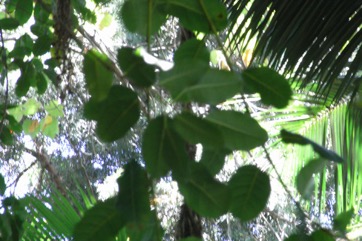
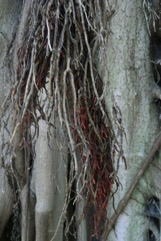
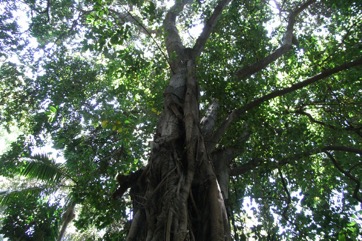
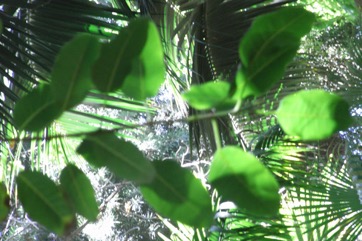
References
Abbiw, D.K., 1990, Useful Plants of Ghana. West African uses of wild and cultivated plants. Intermediate Technology Publications and the Royal Botanic Gardens, Kew. p 47 (As Ficus iteophylla)
Achigan-Dako, E, et al (Eds), 2009, Catalogue of Traditional Vegetables in Benin. International Foundation for Science.
Addis, G., Asfaw, Z & Woldu, Z., 2013, Ethnobotany of Wild and Semi-wild Edible Plants of Konso Ethnic Community, South Ethiopia. Ethnobotany Research and Applications. 11:121-141
Addis, G., et al, 2013, The Role of Wild and Semi-wild Edible Plants in Household Food Sovereignty in Hamer and Konso Communities, South Ethiopia. Ethnobotany Research & Applications. 11:251-271
Anywar, G., et al, 2014, Wild Plants Used as Nutraceuticals from Nebbi District, Uganda. European Journal of medicinal Plants. 4(6):641-660
Asfaw, Z. and Tadesse, M., 2001, Prospects for Sustainable Use and Development of Wild Food Plants in Ethiopia. Economic Botany, Vol. 55, No. 1, pp. 47-62
Batawila, K., et al, 2007, Diversite et gestion des legumes de cueillete au Togo. African Journal of Food, Agriculture, Nutrition and Development 7( 3& 4): 66
Burkill, H. M., 1985, The useful plants of west tropical Africa, Vol. 4. Kew. (As Ficus dekdekena)
Cundall, P., (ed.), 2004, Gardening Australia: flora: the gardener's bible. ABC Books. p 604
Dalziel, J. M., 1937, The Useful plants of west tropical Africa. Crown Agents for the Colonies London.(As Ficus iteophylla)
Dharani, N., 2002, Field Guide to common Trees & Shrubs of East Africa. Struik. p 113
Diouf, M., et al, Leafy Vegetables in Senegal. Bioversity webite (As Ficus iteophylla)
FAO, 1988, Traditional Food Plants, FAO Food and Nutrition Paper 42. FAO Rome p 284
FAO, 1988, Traditional Food Plants, FAO Food and Nutrition Paper 42. FAO Rome p 282 (As Ficus iteophylla)
Feyssa, D. H., et al, 2011, Seasonal availability an consumption of wild edible plants in semiarid Ethiopia; Implications to food security and climate change adaptation. Journal of Horticulture and Forestry 3(5): 138-149
Flora Zambesiaca. http://apps.kew.org/efloras
Food Composition Tables for use in Africa FAO http://www.fao.org/infoods/directory No. 920 (As Ficus iteophylla)
Fowler, D. G., 2007, Zambian Plants: Their Vernacular Names and Uses. Kew. p 48 (As Ficus burkei and Ficus dekdekena)
Ibrahim, H. A., et al, 2012, Ethnobotanical Survey of the Wild Edible Food Plants Consumption among Local Communities in Kano State, North-Western, Nigeria, International Journal of Science and Technology. Vol. 2. No. 10 p 716
INFOODS:FAO/INFOODS Databases
Jardin, C., 1970, List of Foods Used In Africa, FAO Nutrition Information Document Series No 2.p 137 (As Ficus iteophylla)
Latham, P., 2004, Useful Plants of Bas-Congo province. Salvation Army & DFID p 130
Long, C., 2005, Swaziland's Flora - siSwati names and Uses http://www.sntc.org.sz/flora/ (As Ficus burkei)
Lulekal, E., et al, 2011, Wild edible plants in Ethiopia: a review on their potential to combat food insecurity. Afrika Focus - Vol. 24, No 2. pp 71-121
Mannheimer, C. A. & Curtis. B.A. (eds), 2009, Le Roux and Muller's Field Guide to the Trees and Shrubs of Namibia. Windhoek: Macmillan Education Namibia. p 18
Maroyi, A. & Cheikhyoussef, A., 2017, Traditional knowledge of wild edible fruit in southern Africa: A comparative use patterns in Namibia and Zimbabwe. Indian Journal of Traditional Knowledge. 16(3): 385-392
Masters, T., 2021, Traditional food plants of the upper Aswa River catchment of northern Uganda—a cultural crossroads. Journal of Ethnobiology and Ethnomedicine (2021) 17:24
Maundu, P. et al, 1999, Traditional Food Plants of Kenya. National Museum of Kenya. 288p
Maydell, H. von, 1990, Trees and shrubs of the Sahel: their characteristics and uses. Margraf. p 281
Maydell, H. von, 1990, Trees and shrubs of the Sahel: their characteristics and uses. Margraf. p 277 (As Ficus iteophylla)
Mbuya, L.P., Msanga, H.P., Ruffo, C.K., Birnie, A & Tengnas, B., 1994, Useful Trees and Shrubs for Tanzania. Regional Soil Conservation Unit. Technical Handbook No 6. p 272
Mengistu, F. & Hager, H., 2008, Wild Edible Fruit Species Cultural Domain, Informant Species Competence and Preference in Three Districts of Amhara Region, Ethiopia. Ethnobotany Research & Applications 6:487-502
Ojelel, S., et al, 2019, Wild edible plants used by communities in and around selected forest reserves of Teso-Karamoja region, Uganda. Journal of Ethnobiology and Ethnomedicine (2019) 15:3
Peters, C. R., O'Brien, E. M., and Drummond, R.B., 1992, Edible Wild plants of Sub-saharan Africa. Kew. p 152
Purseglove, J.W., 1968, Tropical Crops Dicotyledons, Longmans. p 389
Regassa, T., et al, 2014, Ethnobotany of Wild and Semi-Wild Edible Plants of Chelia District, West-Central Ethiopia. Science, Technology and Arts Research Journal. 3(4): 122-134
Roodt, V., 1998, Trees & Shrubs of the Okavango Delta. Medicinal Uses and Nutritional value. The Shell Field Guide Series: Part 1. Shell Botswana. p 25
Royal Botanic Gardens, Kew (1999). Survey of Economic Plants for Arid and Semi-Arid Lands (SEPASAL) database. Published on the Internet; http://www.rbgkew.org.uk/ceb/sepasal/internet [Accessed 4th May 2011]
Ruiters-Welcome, A. K., 2019, Food plants of southern Africa. Ph.D. thesis. Univ. of Johannesburg p 80
Rumphia 2:17. 1838
Tebkew, M., et al, 2018, Uses of wild edible plants in Quara district, northwest Ethiopia: implication for forest management. Agriculture and Food Security (2018) 7:12
Tredgold, M.H., 1986, Food Plants of Zimbabwe. Mambo Press. p 101
van Wyk, B, van Wyk, P, and van Wyk B., 2000, Photographic guide to Trees of Southern Africa. Briza. p 159
Vivien, J., & Faure, J.J., 1996, Fruitiers Sauvages d'Afrique. Especes du Cameroun. CTA p 222
von Katja Rembold, 2011, Conservation status of the vascular plants in East African rain forests. Dissertation Universitat Koblenz-Landau p 167
Wehmeyer, A. S, 1986, Edible Wild Plants of Southern Africa. Data on the Nutrient Contents of over 300 species
White, F., Dowsett-Lemaire, F. and Chapman, J. D., 2001, Evergreen Forest Flora of Malawi. Kew. p 392
World Checklist of Useful Plant Species 2020. Royal Botanic Gardens, Kew
www.figweb.org
www.worldagroforestrycentre.org/treedb/
www.zimbabweflora.co.zw 2011